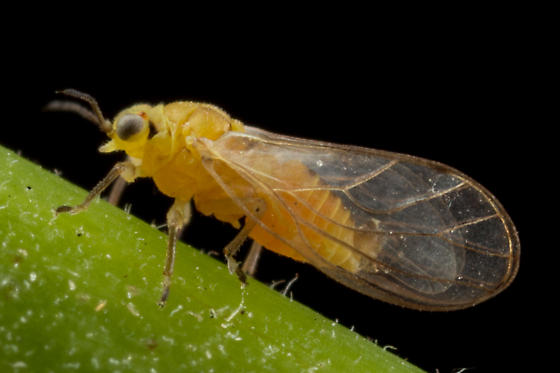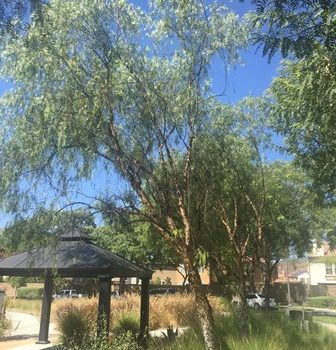California peppertrees are a familiar and popular part of the landscape in Southern California. Though in a sense misnamed (the tree is actually native to Peru), the California pepper likes our arid climate and thrives even in the hottest and driest parts of East County.
Unlike many trees that have been transplanted to drought-plagued Southern California, insufficient water isn’t the main threat to the California peppertree – it’s the peppertree psyllid. A teeny tiny insect resembling an aphid and sometimes called “jumping plant lice.” Adult psyllids are only 1/12 to 1/5 inches long and are easily identified by their tendency to jump, rather than walk or fly away, when disturbed.


Like aphids, psyllids pierce leaves to suck out plant juices. They then excrete a sticky honeydew which attracts black sooty mold. The peppertree psyllid leaves distinctive pits or pockmarks on leaves, an easy way to spot their presence. A psyllid infestation will reduce plant growth, cause terminals to distort and die back, and, combined with the results of honeydew, can cause massive defoliation.


If your California peppertrees look patchy or grey, or you’ve noticed more than the normal amount of leaf drop, contact your arborist immediately to discuss remediation methods.
Best Practices
Here are a few other things you can do to improve the health of your California peppertrees and help them tolerate psyllids:
-Ensure soil has adequate drainage
-Never plant trees in heavy clay soils or in lawns
-Move water sources away from trunks
-Remove grass and other landscaping that requires heavy irrigation from around trees
